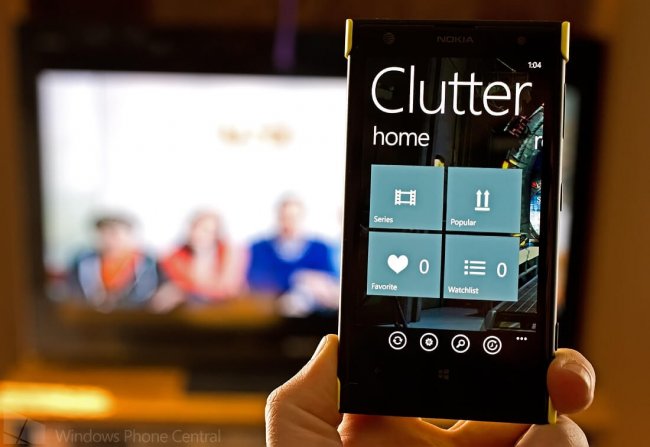Is mobile an after-thought for your e-Learning platform? Do you see it as more of a box-ticking exercise at the end of development just to be sure that the content (or modules) can be accessed on other devices? Well, this may come as a surprise to you, but depending on the needs and behaviour of your learners, this could be a big mistake. Mobile learning is a growing trend. According to Towards Maturity, 64% of learners find accessing their training content from a mobile device essential.
What’s important to keep in mind, however, is that the user experience on a mobile device is very much different from that of a desktop or laptop. Not only are there practical differences such as a smaller screen and a different type of navigation, but also the approach you should be taking, i.e. avoiding longer modules with more complex interactions (as users on mobile are often ‘on the go’, and therefore don’t have as much time on their hands). So these two different types of e-Learning experiences need to be approached individually.
So how do we create memorable and engaging mobile experiences for our learners? In this article, we will outline several tips on how you can create a mobile-friendly e-Learning platform.
Continuous testing with mobile feedback
But before we get started it’s important to point out one of the most critical components of a successful mobile experience: continuous testing with user feedback.

If you truly want to make meaningful improvements, you’ll need a way of measuring if all of your mobile efforts are effective in improving the mobile experience for your learners. And you’ll need to do so continuously so as to prevent new releases and updates from causing frustrations that would otherwise go unnoticed.
In order to achieve and maintain a superior mobile experience (and therefore remain competitive in the market), the application of mobile feedback is fundamental.

Free White Paper: Optimising the Mobile Experience with In-App Feedback
A guide to in-app feedback for mobile product owners
and mobile marketers.
Mobile feedback will enable you to tackle all of the actions above: from design and speed to mobile content and the usability of the mobile application itself. These factors are especially critical when transitioning from a website to a mobile app as there are lots of opportunities for bugs and technical errors to sprout up once your learners start using your mobile modules.
Let’s break it down into two different categories: user experience and content.
User experience (UX)
To measure the UX of your mobile modules, we can use several types of feedback. First is visual feedback, which enables the user to collect screenshots from the learners within different parts of the app. This is ideal – for example – when the learner is getting an error or wants to point out something within the design that can be improved. There are multiple types of feedback scores you can use within your forms to collect this feedback in a more systematic way, including Goal Completion Rate (GCR) and Customer Effort Score (CES).
This type of feedback will also give you insights into the usability and speed of your app’s modules, depending on where you deploy your feedback surveys in-app.
Mobile content
If you create your own content within your e-Learning platform’s modules, then content is also an important factor in the success of your app. And you’re in luck. Mobile content can easily be monitored using mobile feedback. Not only can you use this type of feedback to manage content in the navigation, but also content within the individual modules. Simply deploy mobile feedback surveys within your modules or make sure that the feedback option is always available to the learner via the navigation (if you don’t wish to change the design too much).

Often your customers will be the first to experience these issues so by placing feedback forms throughout your mobile app, you’ll be able to capture valuable insights into the usability of the app and quickly resolve any issues that come about!
Now that we have mobile feedback on the mind… let’s take a look at some tips that’ll help get your e-Learning platform on track with mobile.
Tips for a mobile friendly eLearning platform
1. Avoid clutter
There is simply no time or space for clutter within a mobile e-learning module. Therefore striving for a clean and clutter-free mobile e-Learning experience should be a top priority. This means aiming for a mobile experience that excludes unnecessary information or a busy navigation that leads to distraction or confusion. After all, your mobile learners are already susceptible to the many distractions taking place around them, whether that’s the noisy subway or busy office.

Source: Windows Phone Central
2. Use bite-sized training modules
Seeing as how your learners are likely doing some of their learning on the go, it’s important to cater well to this short window of time with what is referred to as bite-sized modules or ‘nuggets’. These are essentially short but powerful e-Learning modules or exercises that can be completed quickly and easily. According to Elucidat, these modules typically range in duration from 1 to 15 minutes and are usually focused on one or two tightly defined learning objectives.
Whilst we know that true learning takes effort, energy and dedication, many learners struggle to find those windows of concentration. Learning broken into short, bite-sized chunks at least has a higher chance of being used.
In fact, this type of content often fares better if it has been developed primarily with a mobile user interface (UI) to make it fast and easy to access and consume on a mobile device. Note: that doesn’t mean it has to be limited to very simplistic subjects or concepts. You can still integrate sophisticated themes into your modules and maintain a time-friendly and mobile-friendly experience.

Source: Duolingo
3. Make good use of screen space
Similar to our point about clutter (see above), it’s also important to pay close attention to your usage of screen space within your mobile e-learning modules. For example, if you are making the transition from desktop to mobile, it’s critical that you adjust items such as image size and cut back on large blocks of text that can’t be digested easily in a mobile environment. Remember, your learners are learning on a much smaller screen now and therefore what they see must be easy to consume using that space.
We advise also avoiding too many icons or graphs as well as the more bulky graphics as these will require a lot of scrolling on the part of the listener. It’s all about providing a tranquil and cognitive-friendly environment.
4. Make sure your multimedia is mobile-optimised
Another important factor to consider is your multimedia. As we mentioned before, many of your learners will be on the go, meaning they may not have a great Wi-Fi connection. This could result in slower download speeds and therefore, very long loading times when it comes to viewing images, videos and infographics.

How can you do this? Try compressing your larger files so that they download faster and use links to external sites, enabling your learners to access the link at a later time.
5. Focus on maintaining good navigability
Navigation also goes hand-in-hand with many of the tips we’ve listed above. This is so critical in mobile e-learning as it has a direct impact on the satisfaction and mobile user experience of your learners. Being able to quickly and easily navigate through module after module will make your e-learning platform much more attractive and enjoyable for these learners.
That being said, it’s important to keep in mind what constitutes good navigability. Good navigability often includes opting for a menu icon that features a dropdown menu of options. For a mobile app, this must also be optimised properly so that it doesn’t compromise the design of the app or interference with other text / images. Use icons that are visible and easy to tap and avoid using things like hyperlinks so as to keep the design clear and clean-cut. Remember, your learners are using their fingers to navigate so items that are too small to click on will cause frustration.
Start improving your mobile e-Learning platform
As you’re probably well-aware, mobile eLearning courses are becoming more prevalent, particularly in the online training sector. We hope these tips for a mobile-friendly e-Learning platform will help guide you in your journey to becoming a better and more well-rounded e-Learning provider, regardless of your eLearning budget, time constraints, or learning objectives.
Want to learn more about Mopinion’s all-in-1 user feedback platform? Don’t be shy and take our software for a spin! Do you prefer it a bit more personal? Just book a demo. One of our feedback pro’s will guide you through the software and answer any questions you may have.Ready to see Mopinion in action?








